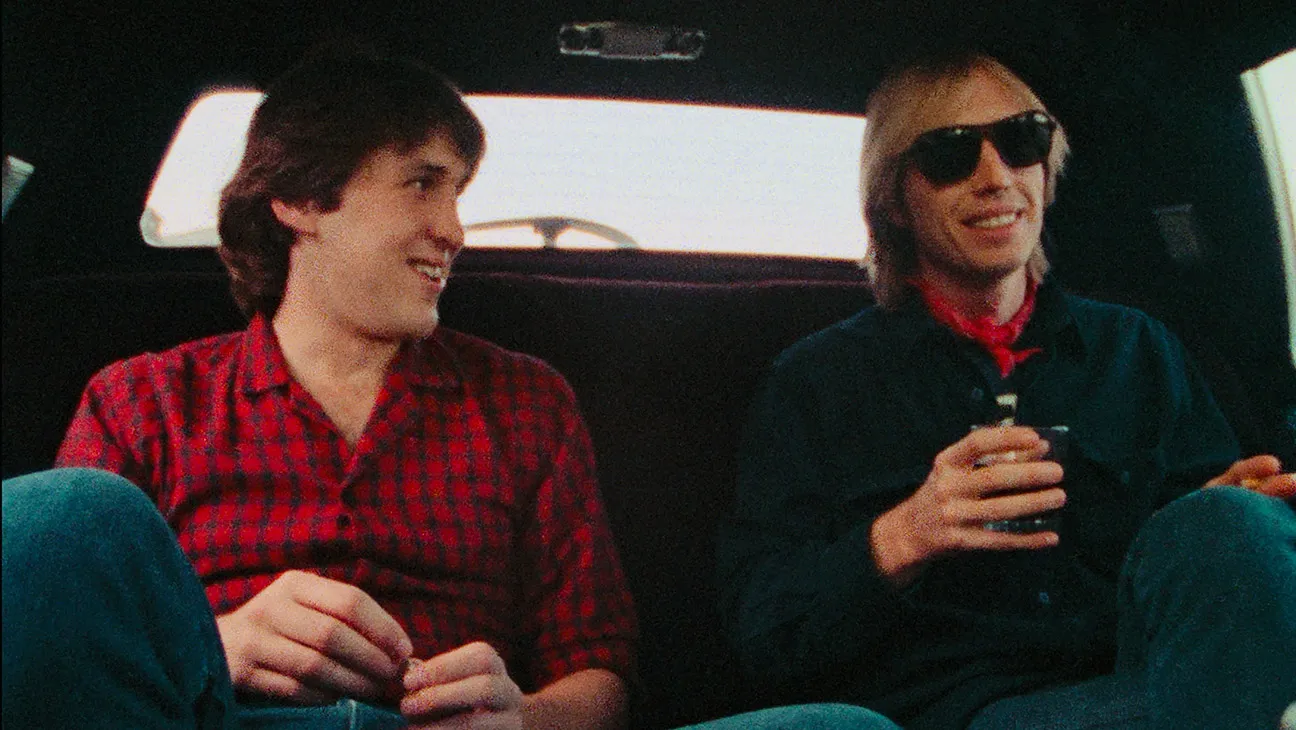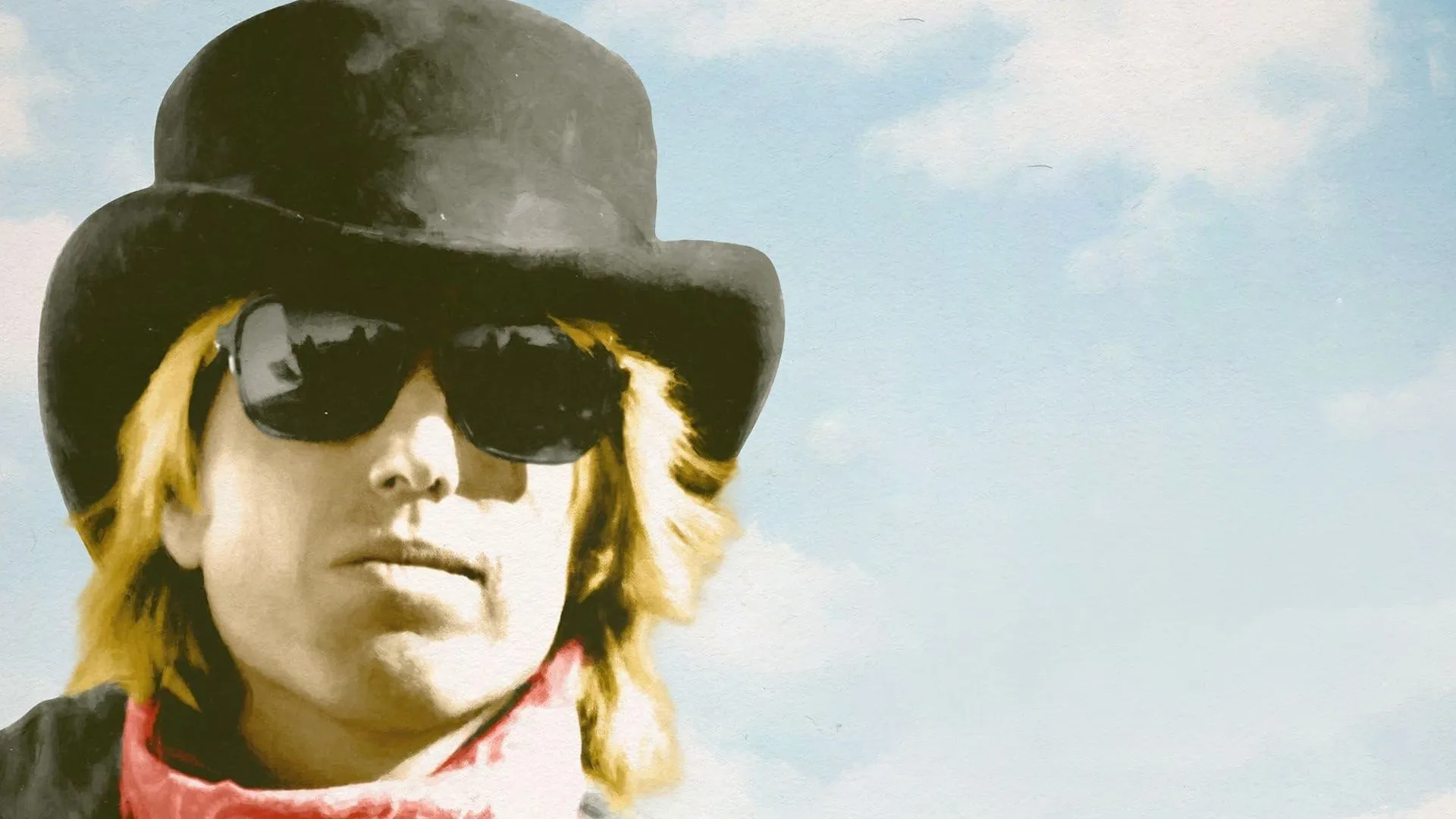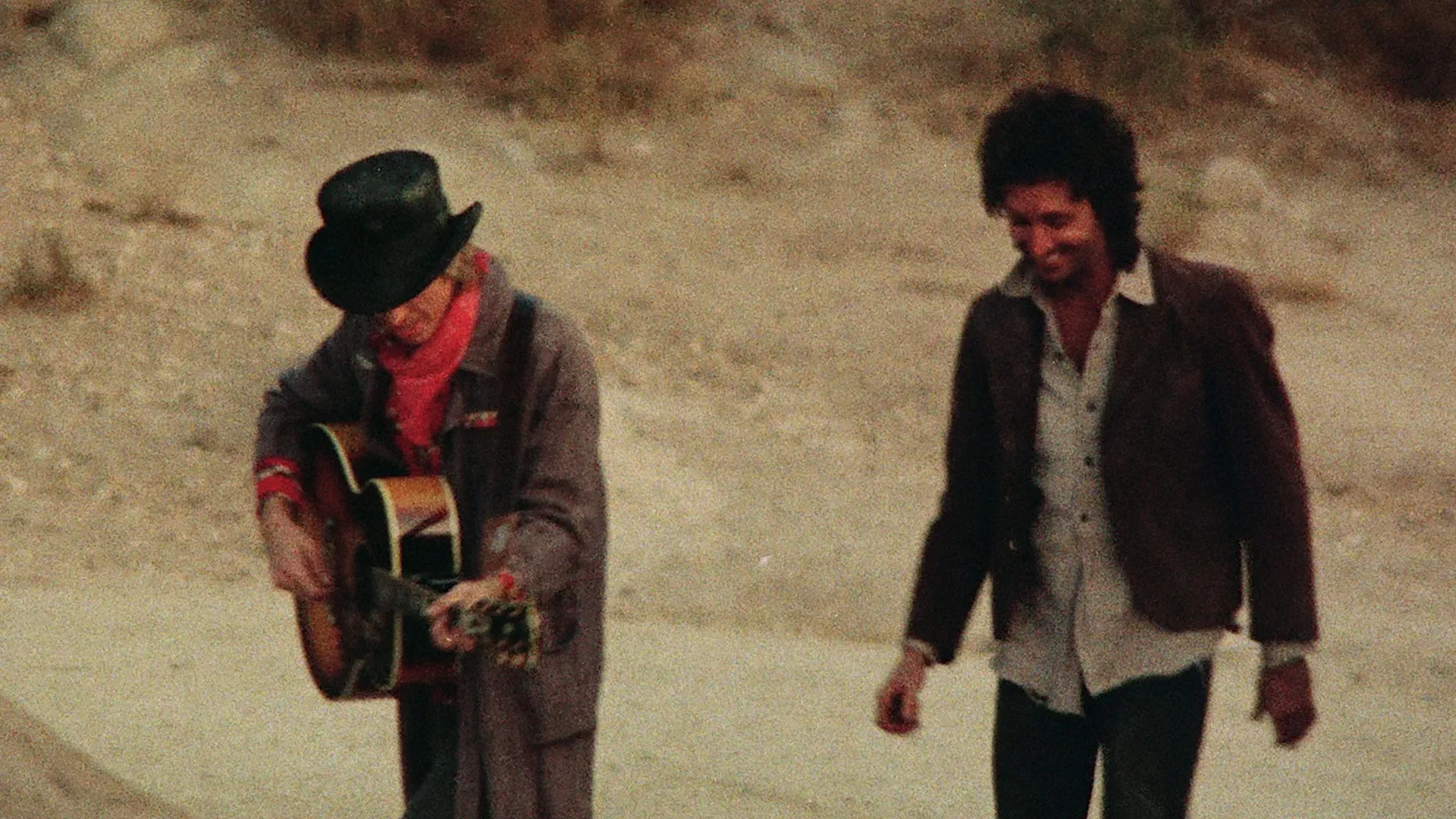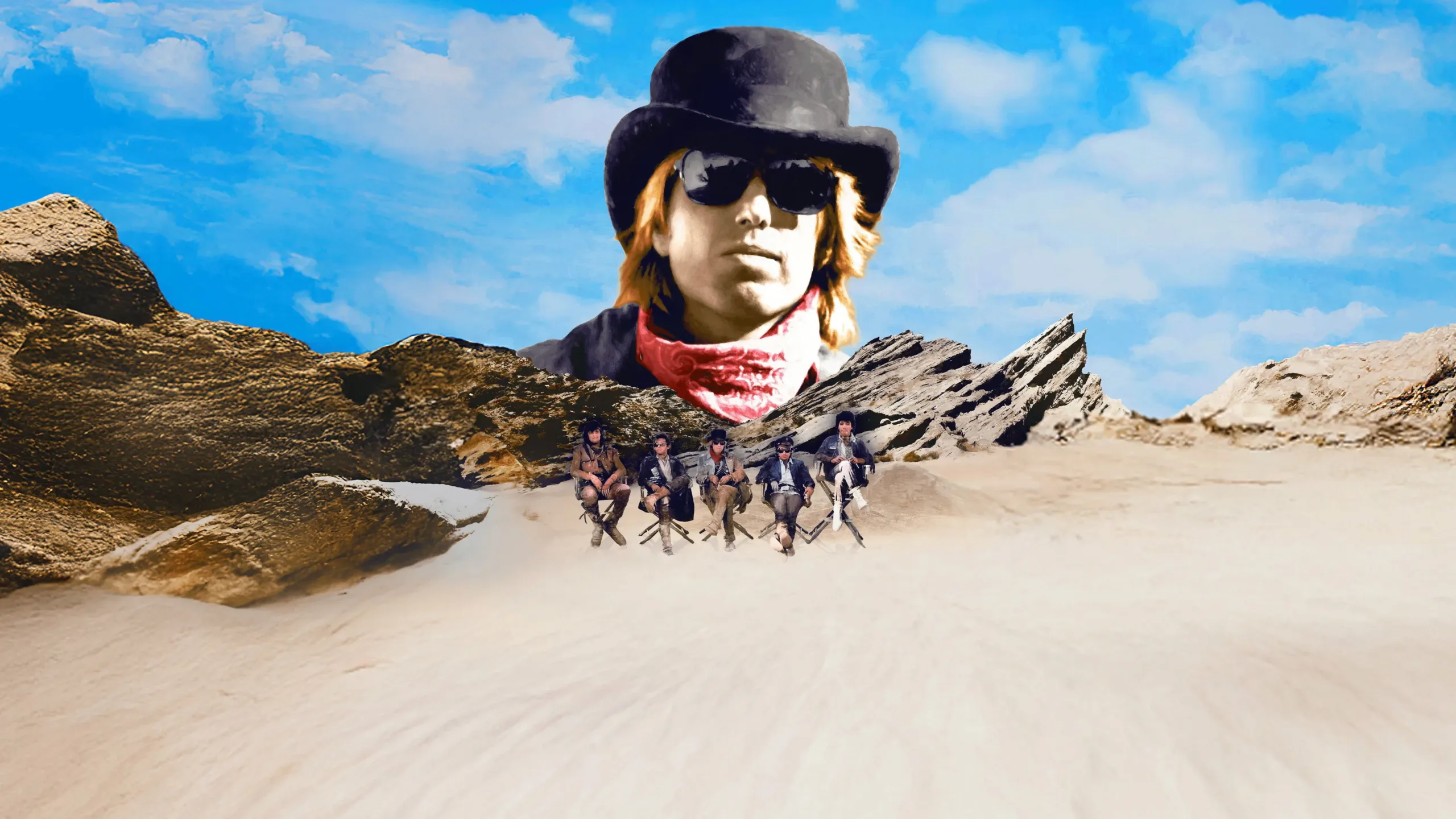Tom Petty: Heartbreakers Beach Party arrives as a freshly unearthed fragment of rock history, shot in 1982–83 by Cameron Crowe and partners Doug Dowdle and Phil Savenick, then vanished after a single MTV broadcast. Restored in 2025 and now streaming on Paramount+, the film frames itself as “A Profile by Cameron Crowe,” trading a conventional narrative arc for candid exchanges and unguarded moments.
Footage oscillates between backstage banter and full-throttle performance, giving camera priority to Petty’s candid reflections on record-company friction and lineup changes. Crowe’s presence remains present but measured, allowing the frontman’s dry wit and musical passion to drive each sequence. The grain of 16 mm film—shadows of locker-room rehearsals, the glare of stadium lights—anchors viewers in that transitional era when MTV’s experimental spirit met the Heartbreakers’ guitar-first ethos.
This hour of material promises more than nostalgia for longtime fans. It unveils Petty’s compositional method in impromptu demos, showcases off-the-cuff collaborations (Stevie Nicks appears mid-session), and captures the restless energy of early ’80s rock culture. For anyone drawn to the intersection of music journalism and documentary form, Beach Party offers an intimate snapshot of an artist and era that continue to reverberate.
Setting the Stage: From Ink to Film
When Cameron Crowe turned his reporter’s notebook toward the camera, he entered a new creative territory. Known for vivid Rolling Stone profiles in the late ’70s, he teamed with Doug Dowdle and Phil Savenick to craft a one-hour portrait of Tom Petty & the Heartbreakers shot in 1982–83. Crowe’s first directorial effort carries traces of his journalistic instincts—sharp questions, candid moments—yet carries a looseness that only film can deliver.
At the time, the Heartbreakers had just wrapped Hard Promises and were gearing up to record Long After Dark. Their ascent collided with MCA Records’ attempt at “superstar pricing,” a flashpoint that Petty addresses on camera with pointed humor. That dispute over charging $8.98 instead of the usual album rate captures the tension between art and commerce at a moment when vinyl sales still ruled the airwaves.
MTV offered a fitting outlet for this unscripted profile, premiering it only once in February 1983 before executives deemed its format too unconventional for regular rotation. For decades, the original 16 mm reels lay dormant until 2025, when film archivists unearthed Crowe’s raw footage. The rediscovery interrupted the assumed finality of those lost tapes, transforming them into a time capsule of early MTV-era rock life.
The restored version adds twenty minutes of newly surfaced outtakes and a closing segment featuring Crowe in conversation with Adria Petty, Tom’s daughter. Her reflections tie past and present, highlighting moments where the archive’s grainy textures reveal both Petty’s charisma and the uncertainties of a band on the brink of wider fame.
Fractured Frames: The Doc’s Meandering Rhythm
Crowe treats Heartbreakers Beach Party less like a straightforward band biography and more like a rolling feature story in motion. He borrows the conceit of a Rolling Stone cover profile—focused tightly on Petty’s persona—and translates it into film by weaving interview snippets, studio jams, and live excerpts into a loose tapestry. The result resists a clear rise-and-fall arc. Instead, sequences drift from candid conversations to performance, giving the piece a wandering energy that mirrors the creative process it captures.
Interview moments unfold in unexpected settings: a limousine backseat becomes a confessional booth where Petty weighs the perks and traps of celebrity, dissecting the tug-of-war between artistic authenticity and record-company demands. That same spirit carries over to a cramped tour bus, where he sketches the skeleton of “I’m Stupid” on acoustic guitar, revealing songwriting as equal parts spontaneity and calculation. These off-the-cuff demos ground the film in immediacy.
Performance footage alternates between full-length takes and rapid cutaways. A driving rendition of “Refugee” stretches out into raw, sustained energy, while rehearsal clips shimmer with half-formed ideas. Studio jams with Stevie Nicks on “Stop Draggin’ My Heart Around” feel like secret sessions discovered after midnight. The balance among concert hall, recording booth, and informal hangouts reflects the band’s multifaceted identity.
Scattered outtakes—Petty rifling through a box of candid photos, a producer’s unseen voice mocking Crowe’s on-camera intros—add a playful layer. Crowe’s occasional asides, trimmed or buried by that off-screen producer, underscore the negotiation between artist, documentarian, and network. Rather than forcing a tidy storyline, Crowe embraces collage. The result pulses with the unpredictability of early MTV experimentation, charting neither clear peaks nor valleys but floating through creative moments as they unfold.
Grain and Groove: The Film’s Textural Vocabulary
The film’s visual language speaks through its embrace of 16 mm grain, evoking the tactile rawness of early ’80s rock documentaries. Each frame carries flecks of light and shadow that feel intrinsic to the era: backstage corridors hazy with cigarette smoke, rehearsal floors strewn with cables and empty coffee cups. When the camera lingers on Petty’s face—poised at a mixing board or leaning into a microphone—those close-ups become studies in concentration, the texture of his skin and the glint in his eyes amplified by the medium’s inherent warmth.
Editing stitches these moments into a dynamic montage, pairing offstage banter with live performance. A sudden cut from laughter in the dressing room to a thunderous stadium riff underscores the band’s dual existence: intimate collaborators and public spectacle. Pacing shifts with deliberate elasticity—two minutes of contemplative interview in a limo dissolve into a breathless rendition of “Refugee,” then back to Petty idly tuning a guitar. That ebb and flow sustains viewer attention, granting space for both adrenaline and reflection.
Sound design builds on the grain’s physicality. Remastered audio balances crowd roar and whispered confession, revealing the nuances of pedal steel and rhythmic thrum. Instruments occupy distinct acoustic layers—the bass guitar’s low hum, the drums’ crisp snap—asserting the primacy of real strings in a decade defined by synthesizer sheen. When Petty’s vocal rises, it cuts through ambient hum, an anchor of human presence amid amplified textures.
Graphic inserts reinforce the documentary’s profile stance. Title cards proclaim “A Profile by Cameron Crowe,” asserting authorial intent without overt flourish. Subtle date stamps or location tags ground each segment in time, reminding viewers that these sequences are archival revelations. Those on-screen cues act as gentle signposts, guiding attention through a collage that defies a linear path yet remains coherent in its layered presentation.
Echoes on Stage: Live and Hidden Gems
The film opens with “Refugee” in full flight, a visceral declaration of Petty’s stagecraft. Guitars slice through the air while Petty leans into the mic with poised urgency. The camera holds on his silhouette against a floodlit backdrop, capturing the tension between performer and pulse of the crowd. Moments later, footage from the Winterland Ballroom shatters the illusion of safe distance—fans surge forward, security struggling to hold the line—demonstrating how raw enthusiasm could overwhelm the era’s looser safeguards.
In quieter corners of the documentary, studio sessions with Stevie Nicks reveal a different kind of intimacy. Petty’s fingered demo of the Bo Diddley riff behind “American Girl” gains new resonance when juxtaposed with the polished duet that follows. The ribbon of tape around the mixing console becomes an archive of creative sparks: there’s playful refrains of “Wild Thing,” captured mid-guffaw, and glimpses of the “You Got Lucky” video shoot, where post-apocalyptic sets mingle with the band’s irreverent rehearsal.
Costume emerges as unspoken signifier: Petty’s cowboy boots and tucked-in skinny jeans announce a rock-and-roll uniform, while drummer Stan Lynch’s mullet catches the overhead glare, indexing the stylistic markers of early ’80s L.A. Those details transform banter into shorthand for identity, anchoring each performance in a cultural moment.
Interludes widen the frame to campus auditoriums and hometown streets. Petty lecturing UCLA students on album pricing morphs into a lesson on artistic value, his voice steady against rows of folding chairs. Later, he accepts the key to Gainesville—an emblem of local pride—grasping civic recognition with the same casual gravity he brings to his songs. These vignettes knit fan and city into the band’s narrative, reminding viewers that Petty’s music thrived at the intersection of place and persona.
Conversations in Contrast: Crowe and Petty Unmasked
Crowe appears on screen with the ease of an old confidant, yet his questions retain a reporter’s precision. In moments he steps aside—camera fixed solely on Petty’s face as he dismantles record-company posturing—Crowe acknowledges that true insight demands silence. Their dynamic balances warmth and objectivity, granting Petty space to articulate both wit and wariness.
A throughline emerges: authenticity as resistance. Petty’s insistence on “real guitars” speaks against the decade’s shift toward synthesizers, casting his band as purveyors of unvarnished sound. That ethos resonates when he acknowledges limo travel’s absurdity yet allows himself its comfort—a quiet rebellion against forced humility. These contrasts perpetually unsettle the viewer: a rock star who rejects artifice while embracing its trappings.
Industry critique surfaces in sharp asides about “superstar pricing,” where Petty’s tone carries more bite than nostalgia. His mock outrage at album costs underscores a broader tension between art as commerce and art as community.
The film’s experimental pacing—likely born from MTV’s appetite for novelty—mirrors the era’s openness. Freewheeling clips of late-night jams and candid photo-box discoveries unfold without signposts, capturing rock culture on the brink of reinvention. Through their interplay, Crowe and Petty channel an optimism that feels less scripted profile and more an invitation to witness creativity in motion.
Full Credits
Director: Cameron Crowe
Writers: Cameron Crowe
Producers: Cameron Crowe, Phil Savenick, Adria Petty, Greg Mariotti, Sarah Haber
Executive Producers: Bruce Resnikoff, Danny Bramson
Cast: Tom Petty, Mike Campbell, Benmont Tench, Howie Epstein, Stan Lynch, Cameron Crowe
Director of Photography (Cinematographer): John Veleta
Editors: Eric Agiro, Joseph Volpe
Composer: Tom Petty & The Heartbreakers
The Review
Tom Petty: Heartbreakers Beach Party
Tom Petty: Heartbreakers Beach Party reframes a forgotten moment in rock history with unfiltered curiosity. Its kaleidoscopic cuts—from raw live blasts to intimate studio sessions—reveal Petty’s steadfast commitment to genuine musicianship amid a synth-driven decade. Crowe’s unobtrusive presence encourages authentic dialogue, letting the band’s energy and industry skepticism speak for themselves. The restored footage crackles with period detail and emotional candor, offering a vivid window into an artist and era that continue to resonate.
PROS
- Archival footage feels immediate and unfiltered
- Candid studio and backstage moments enhance intimacy
- Live sequences (“Refugee,” Winterland Ballroom) pulse with energy
- Restored audio brings clarity to guitar-driven performances
- Crowe’s rapport with Petty yields genuine industry insights
CONS
- Meandering structure can dilute narrative momentum
- Grainy 16 mm segments occasionally obscure detail
- Abrupt edits disrupt thematic cohesion
- Minimal context for the band’s later evolution
- Limited exploration of supporting band members




















































